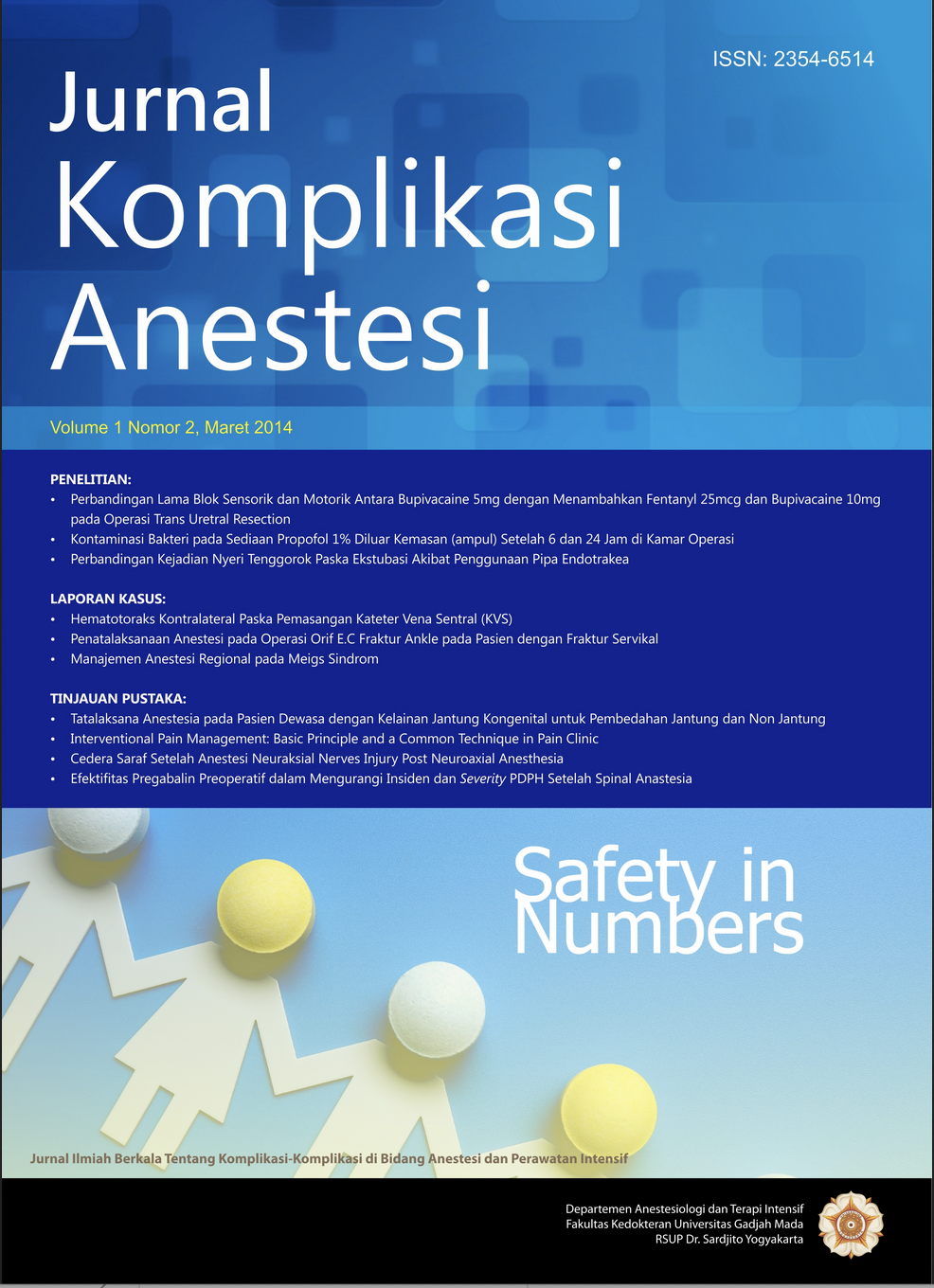Interventional Pain Management: Basic Principle and a Common Technique in Pain Clinic
Abstract
Pain management has progress better with the development of interventional pain management (IPM) technique. IPM is applying techniques that directly interact with the structures mediating the pain, with aim to diagnosis and/or treatment of pain and related disorders, this generally involves introducing medications, electrical current, heat, cold, or chemicals into the body at sites involved in the production of pain and mostly as minimal invasive treatment.
Nerve block with local anesthetic, anti-inflammatory agent injection, nerve denervation with neurolitic agent, radiofrequency ablation, electrical stimulation and opioid neuraxial with implantable devices was the main techniques in Interventional Pain Management for chronic and cancer pain with good result if it done as indication and based on good scientific evidence.
Although better efficacy of intervention technique with imaging guide such as fluoroscopy and ultrasound guided, some of procedures can be done by Anesthesiologist in Pain Clinic like epidural steroid injection with interlaminar approach; some of nerve block for instance block nerve suprascapularis and nerve occipitalis; and trigger point injection.
This article will review basic principle of interventional pain management and explain about Interlaminar approach of epidural steroid injection, one of the common technique that can be done in pain clinic.

Copyright (c) 2014 Takdir Musba

This work is licensed under a Creative Commons Attribution-NonCommercial-ShareAlike 4.0 International License.
The Contributor and the company/institution agree that all copies of the Final Published
Version or any part thereof distributed or posted by them in print or electronic format as permitted herein will include the notice of copyright as stipulated in the Journal and a full citation to the Journal.
















